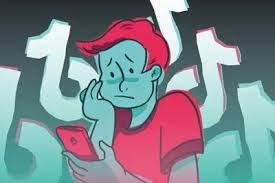South Asian Contributions to Medicine
- Sabrina Aezaz

- Sep 18, 2022
- 4 min read
Written by Sabrina Aezaz
Edited by Sharon Park
Hi everyone! Welcome to the first article in our Cultures in Medicine series, where we highlight different cultures that have contributed to medicine and scientific discovery, that are often not recognized for their developments and contributions. This article covers South Asian contributions to medicine and is written by Sabrina. Hope you enjoy!
-----------------------------------------------------------------------------------------------------------------------------------------------------------------------------------------------------------------------
South Asian culture has been prevalent in the media recently, thanks to shows like Bridgerton, Never Have I Ever, and Miss Marvel, yet there still remains a bit of underrepresentation of South Asian accomplishments.

We are taught about Darwin and his theory of natural selection, Mendel and his laws of inheritance, and of course, a bunch of other Western male biologists, but what about South Asian biologists? In what ways have their discoveries and inventions furthered works in medicine?
Har Gobind Khorana:

Har Gobind Khorana was born in Raipur, Pakistan, in 1922. He grew up poverty-stricken in a village, but his father worked hard to make sure him and his siblings would get the best education they could. He received the award of a Government of India Fellowship, so he was able to study abroad in England and received his Ph.D. from University of Liverpool. In London, he participated in research, where he was able to confirm the findings of a previous researcher (Nirenberg), that there were 4 different nucleotides, the structural unit of DNA, arranged in a spiral staircase in a DNA molecule. He added information of what serial combinations of nucleotides correspond to form certain amino acids, the building blocks of proteins, and also discovered that codons, groups of nucleotides that make DNA, direct cells activity pertaining to proteins.
Sushruta

Sushruta was an ancient Indian Brahmin physician born in 800 BC and accredited with the title of the “Father of Plastic Surgery.” He created Sushruta Samhita, a medical book that included over 300 surgical procedures and 120 surgical instruments he invented. His book was later translated and shared with Europe. He made plastic surgery and was most known for his procedure of rhinoplasty, which he developed because rhinotomy, mutilation of the nose, was a common punishment for criminal offenses and women accused of adultery, so people would shamefully be branded, but because of rhinoplasty they’d be given hope to live a normal life. His entire procedure was interesting in the way in which he made use of the basic things he had. He would use wine as an anesthetic and ant heads to sew sutures.
Upendra Nath Brahmachari:

Upendra Nath Brahmachari was a physician born in Sardanga, India, in 1873. At the time, black fever was plaguing South Asia, by its transmission through sand flies, and tartar emetic, a mixture of potassium acid salt and antimony oxide, was being used as a treatment. However, physicians found that there were many serious effects (such as ulcers, nausea, and cardiac toxicity) that could come out of prolonged use. Brahmachari then made it his mission to discover a more efficient way to treat black fever. He sought out a cure that would not only have less adverse effects on its users, but also had higher availability and was prepared at a faster rate. He began his research at Campbell Hospital, lacking all basic equipment, yet still determined enough to find the ultimate solution to black fever: Urea Stibamine, a urea salt derived from stibanilic acid. Thanks to him, black fever became a less serious problem in South Asia. Although he's most known for this cure, he has worked on cures for several other diseases such as malaria and diabetes.
These are few of the many South Asians who’ve somehow impacted medicine in ways deemed admirable. In ways that would help future generations of biologists and physicians, further figure out the medicinal world around them. Yet, this brings up the question, if there are so many that helped bring about these renowned innovations, why don’t we hear about them in class? Why is there no media coverage?
Why is it that when you search Darwin, there are around 416,000,000 search results, but when you look up Har Gobind Khorana, there are only 97,300?
The current media seems to be in love with having South Asian leads in shows, as a means to depict their culture, however, they should also begin to acknowledge South Asian achievements, it’s only fair they receive credit.
------------------------------------------------------------------------------------------------------------------------------------------------------------------------------------------------------------------------
Thanks for reading the first article in our Cultures in Medicine Series, where we hope to highlight various cultures that have significantly contributed to the expansion of medicine around the world! We hope you learned about some important South Asians who have made significant discoveries in medicine and healthcare worldwide and have learned about the lack of representation and acknowledgements for South Asian scientists.
If you enjoyed this article, check out our Technologies in Medicine article on Telemedicine by Salina Shafi, linked here.
See you next article,
Sabrina and the Writing Committee :)
References:
Dharmawiki. “Sushruta Samhita (सुश्रुतसंहिता).” Dharmawiki, Dharmawiki, 30 May 2021, dharmawiki.org/index.php/Sushruta_Samhita_%28%E0%A4%B8%E0%A5%81%E0%A4%B6%E0%A5%8D%E0%A4%B0%E0%A5%81%E0%A4%A4%E0%A4%B8%E0%A4%82%E0%A4%B9%E0%A4%BF%E0%A4%A4%E0%A4%BE%29. Accessed 13 Sept. 2022
“Har Gobind Khorana.” Encyclopædia Britannica, Encyclopædia Britannica, Inc., www.britannica.com/biography/Har-Gobind-Khorana. Accessed 13 Sept. 2022
Home, vigyanprasar.gov.in/brahmachari-upendra-nath/. Accessed 13 Sept. 2022
Mark, Joshua J. “Sushruta.” World History Encyclopedia, Https://Www.worldhistory.org#Organization, 11 Sept. 2022, www.worldhistory.org/sushruta/. Accessed 13 Sept. 2022
“The Nobel Prize in Physiology or Medicine 1968.” NobelPrize.org, www.nobelprize.org/prizes/medicine/1968/khorana/biographical/. Accessed 13 Sept. 2022
“Professor Har Gobind Khorana: Biographical Summary.” WhatisBiotechnology.org, www.whatisbiotechnology.org/index.php/people/summary/Khorana. Accessed 13 Sept. 2022
Right to Know Hazardous Substance Fact Sheet - Nj.gov. nj.gov/health/eoh/rtkweb/documents/fs/0145.pdf. Accessed 13 Sept. 2022
Staff, Homegrown. “India's Most Incredible Medical Contributions to the World.” Homegrown, Homegrown, 20 Dec. 2019, homegrown.co.in/article/10038/indias-most-incredible-medical-contributions-to-the-world. Accessed 13 Sept. 2022
“Upendranath Brahmachari.” Wikipedia, Wikimedia Foundation, 7 July 2022, en.wikipedia.org/wiki/Upendranath_Brahmachari. Accessed 13 Sept. 2022






Testosterone therapy ( https://hrtmedical.net/ ) is provided to men with officially diagnosed hypogonadism (or low T). You get improved muscle strength, better sex drive, better shape, and more energy.